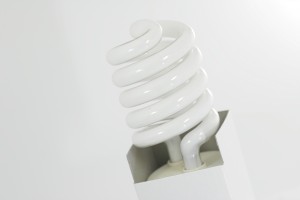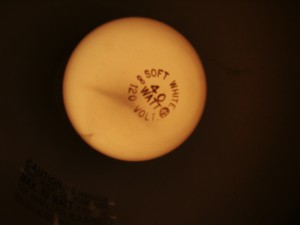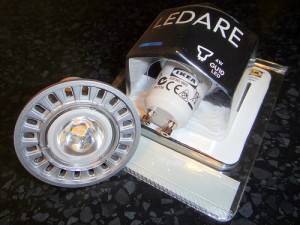
Fluorescent Lightbulb
How to choose
the proper light bulb
WITH RISING ENERGY COSTS AND A GROWING MARKET FOR SUSTAINABILITY, MORE PEOPLE ARE CHOOSING TO REVISIT THEIR LIGHTING CHOICES; HERE IS A LOOK AT HOW TO CHOOSE THE THE PROPER LIGHTBULB FOR YOUR HOME.
Until relatively recently, there have been few choices in the world of light bulbs. Most of us just ran to the store and picked out a light bulb based on the wattage. Words like “incandescent” or “compact fluorescent” weren’t really associated with our choice; a light bulb was just a light bulb.
These days we have many choices in light bulbs and a whole lot of jargon to swim through when choosing our home lighting. Things are not nearly as straightforward as they used to be. Many people are still relying on the wattage of the bulb to choose the correct one, because we have learned to associate wattage with the amount of light given by the bulb. This assumption is incorrect.
Wattage refers to the power consumed, not the light it generates. Lumens measure the bulb’s brightness. A 60 watt incandescent light bulb puts out about 800 lumens. It only takes 13-15 watts for a compact fluorescent light bulb (CFL) to put out the same, or 6-8 watts for the LED bulbs.

Incandescent 40 Watt bulb
Another term to watch for is the color temperature of a bulb. Color temperature measures the color of the light that the bulb gives off. One of the biggest gripes that we hear these days is that the “ugly fluorescent lighting” is harsher and appears a strange color. Contrary to popular belief, you can buy CFL bulbs and LED bulbs that appear to have the same color as incandescent light bulbs. You just need to know what to look for! Color temperature is measured in degrees Kelvin. The standard incandescent bulb that we are all familiar with is usually in the 2700K range. Higher numbers than that will yield a bluer light, while the lower numbers will give you a yellower hue. Bulbs that fall in the range of 3500 – 4100 are more white in appearance.
As of January 2012, the US Federal Trade Commission requires labeling that appears similar to the Nutrition Information on food labels that will help you choose the right bulb. These “Lighting Facts” help distinguish the differences between the bulbs, giving you more than just the wattage to judge your light on. The chart to the right will help you decode the new light bulb nutrition labels.
See the chart below for a comparison!
| Type of Bulb: | Incandescent | Compact Fluorescent | LED |
| Average Lifespan | 1,200 hours | 8,000 hours | 50,000 hours |
| Watt Comparison | 60 watts | 13-15 watts | 6-8 watts |
| Kilo-watts per year avg. (based on 30 bulbs) | 3285 KWh/yr | 767 KWh/yr | 329 KWh/yr |
| Annual Cost (based on 30 bulbs) | $328.59 / yr | $76.65 / yr | $32.85 / yr |
| Contains Mercury (Environmental Concern) | No | Yes | No |
| Carbon Dioxide Emissions (30 bulbs) | 4500 pounds per year | 1051 pounds per year | 451 pounds per year |
| External Temperature Sensitive | Low | Some | None |
| Humidity Sensitive | Some | Yes | No |
| On/Off Cycling Sensitivity (can reduce lifespan) | Some | Yes | No |
| Instant On | Yes | No | Yes |
| Durability | Easily Breakable Glass and Filament | Easily Breakable Glass | Can handle bumping and jarring |
| Heat Emitted | 85 btu’s/hr | 30 btu’s/hr | 3.4 btu’s/hr |
| Lumens450800
1,100 1,600 2,600 |
Watts4060
75 100 150 |
Watts9-1313-15
18-25 23-30 30-55 |
Watts4-56-8
9-13 16-20 25-28 |
